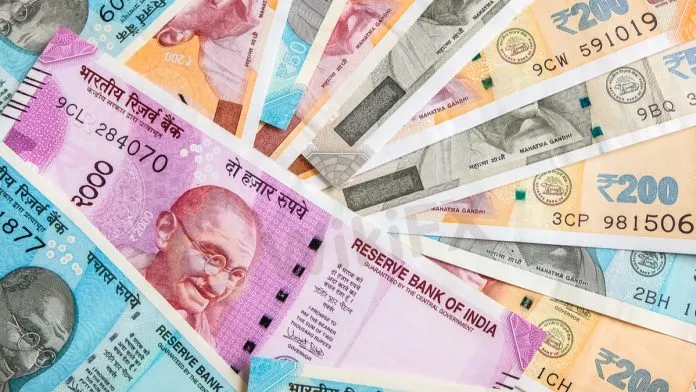简体中文
繁體中文
English
Pусский
日本語
ภาษาไทย
Tiếng Việt
Bahasa Indonesia
Español
हिन्दी
Filippiiniläinen
Français
Deutsch
Português
Türkçe
한국어
العربية
USD/INR Updates
Abstract:Rupee Sees First Quarterly Loss In A Year.
Indian Rupee (INR) rises but falls across the quarter
Moodys Analytics raises concerns over Indian inflation
US Dollar (USD) declines despite surge in ADP
President Bidens infrastructure spend in focus
The US Dollar Indian Rupee (USD/INR) exchange rate is falling on Wednesday after two straight days of gains. The pair settled +0.95% on Tuesday at 73.44. At 19:30 UTC, USD/INR trades -0.4% at 73.14.
The Rupee posted its first quarterly fall versus the US Dollar in four quarters. The Rupee still managed to achieve 0.5% gains against the US Dollar this month, far outperforming its emerging market peers.
The Rupee fell -0.1% versus the US Dollar this quarter after a 1% rally in the final quarter of last year.
Separately Moodys analytics traised concerns over the level of inflation in India, as inflation in other Asian economies remained subdued. Rising fuel prices are expected to keep upward pressure on the consumer price index. This would leave no headroom for the Reserve Bank of India to cut rates further.
The US Dollar trended lower across the board on Wednesday. The US Dollar Index, which measures the greenback versus a basket of major peers trades -0.2% at the time of writing, off its 4 month high but still over 93.00.
US treasury yields have slipped, pulling the US Dollar lower, following marginally weaker than expected ADP private payroll data and as US President Joe Biden is to unveil a $2 trillion infrastructure spending plan, in addition to corporate tax rises.
The US ADP payroll report showed that 517,000 jobs were added in March, the most in 6 months, although this was slightly below the 550,000 forecast. The rapid vaccination programme is moving the US towards a broader reopening, bolstering the jobs market. Februarys ADP report came in significantly lowers at 176,000.
Attention is now firmly on President Biden, who is set to lay out the details of a $2 trillion spend shortly. The $2 trillion figure, whilst enormous, is slightly short of the $3- $4 trillion that was expected.

Disclaimer:
The views in this article only represent the author's personal views, and do not constitute investment advice on this platform. This platform does not guarantee the accuracy, completeness and timeliness of the information in the article, and will not be liable for any loss caused by the use of or reliance on the information in the article.
WikiFX Broker
Latest News
Geopolitical Events: What They Are & Their Impact?
Volkswagen agrees deal to avoid Germany plant closures
Top 10 Trading Indicators Every Forex Trader Should Know
TradingView Launches Liquidity Analysis Tool DEX Screener
MultiBank Group Wins Big at Traders Fair Hong Kong 2024
WikiEXPO Global Expert Interview: Simone Martin—— Exploring Financial Regulation Change
'Young investors make investment decisions impulsively to keep up with current trends' FCA Reveals
Why Do You Feel Scared During Trade Execution?
CySEC Settles Compliance Case with Fxview Operator Charlgate Ltd
Scope Markets Review: Trustworthy or Risky?
Currency Calculator



